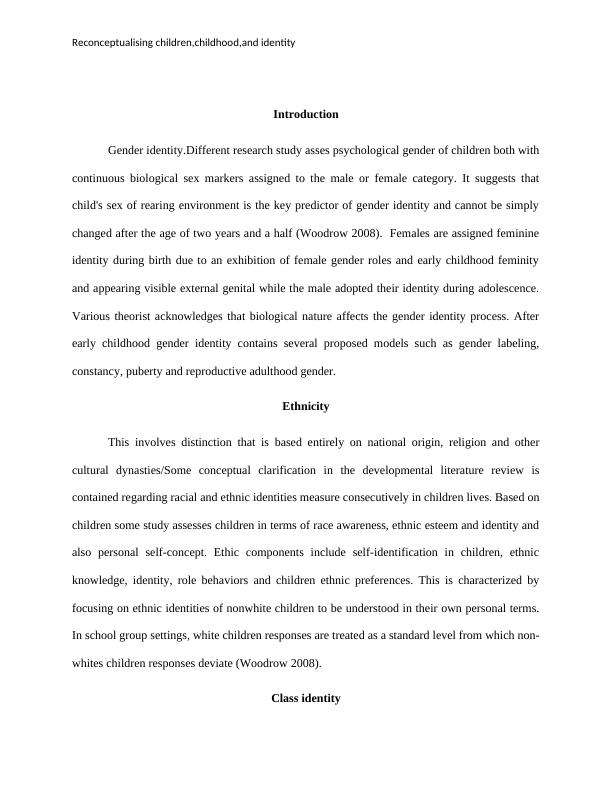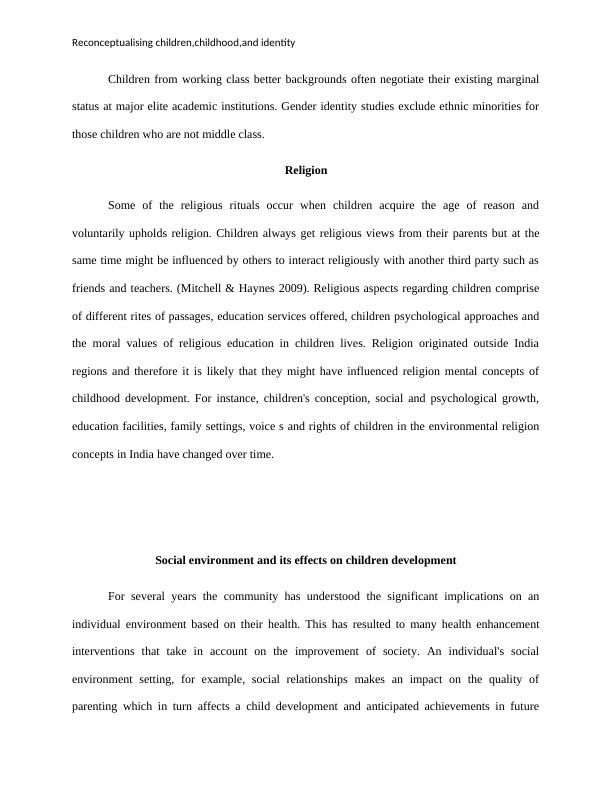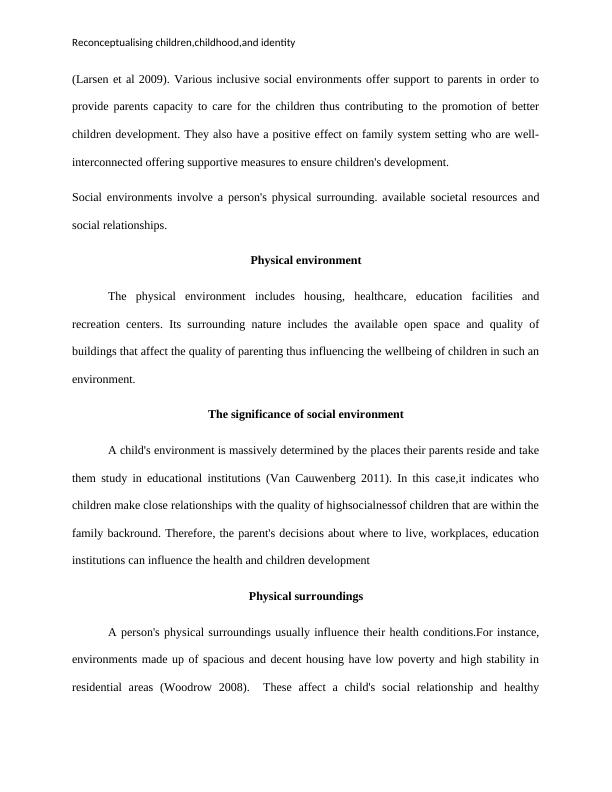Reconceptualising Children, Childhood, and Identity
Critically reflect on a childhood classroom, analyze the physical and social environment, discuss the role of adults, and apply theories and perspectives of children and childhood to discuss features of an educational setting that supports active citizenship, identity, voice, and agency.
14 Pages3689 Words485 Views
Added on 2023-06-12
About This Document
This article explores the impact of social environment and relationships on children's development and citizenship. It covers topics such as gender identity, ethnicity, class identity, religion, physical environment, and children's voice and participation. It also discusses children's agency, curriculum, and pedagogy.
Reconceptualising Children, Childhood, and Identity
Critically reflect on a childhood classroom, analyze the physical and social environment, discuss the role of adults, and apply theories and perspectives of children and childhood to discuss features of an educational setting that supports active citizenship, identity, voice, and agency.
Added on 2023-06-12
ShareRelated Documents
End of preview
Want to access all the pages? Upload your documents or become a member.
Understanding Gender Identity: Development and Impact on Society and Self
|3
|889
|425
Developmental Psychology: Theories of Gender Role Development
|6
|1503
|199
The Child in Context: Gender, Ethnicity, Culture and Social Class
|12
|3074
|367
Anthropology - Culture, Gender and Identity Thesis 2022
|8
|2294
|27
Gender and Social Classes | Report
|9
|2056
|20
Factors Affecting Gender Roles: Parental Influence and Play Patterns
|4
|717
|328




